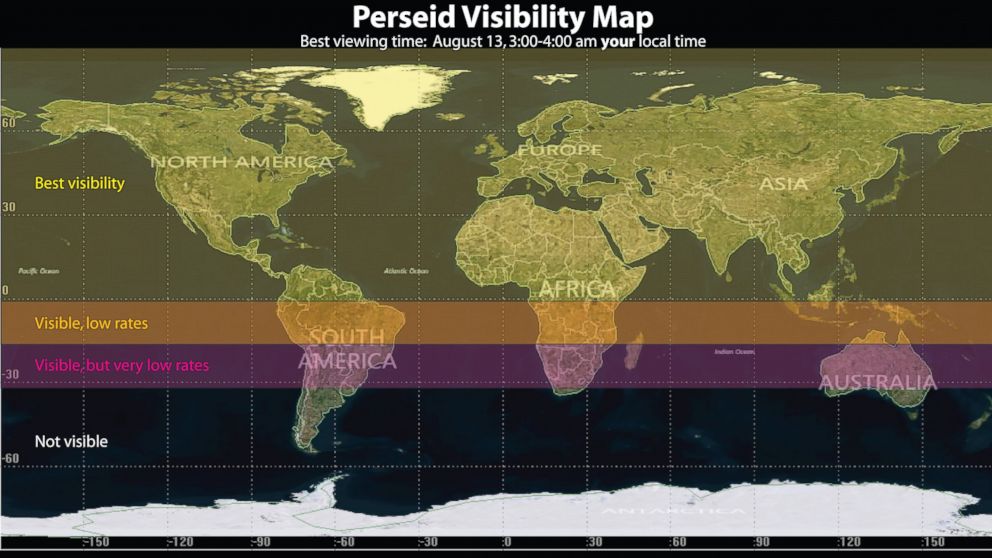Perseids Meteor Shower Expected to Peak Tonight
More than 100 shooting stars per hour expected to streak across the sky.
— -- The Perseids meteor shower is set to peak tonight as 100 shooting stars an hour are expected to streak across the night sky, and continue for several days.
“Despite a bright moon, there should still be a good show from this prolific shower,” NASA wrote on its website. “Much of the world can see Perseid any time after full dark, with peak viewing projected on the early morning of Aug 13.”
"The best time to see the showers will be at around 2 a.m.," Tony Berendsen, an outreach astronomer and founder of Tahoe Star Tours, told ABC News.
“To see the meteor shower, you don’t need a telescope, binoculars or any other equipment,” Berendsen said. “All you need is your eyes.”
The Perseids meteor shower is the result of space debris from the tail of the Swift-Tuttle comet strikeing the Earth’s atmosphere.
The Perseids have been observed for at least 2,000 years and are associated with the Swift-Tuttle comet orbiting around the sun once every 133 years. The Earth passes through a cloud of the comet’s debris each year in August, according to NASA.

If you are not sure about the visibility of meteor shower, you can join the live chat at NASA's chat and ask an expert.
If you don't live in the Northern hemisphere, or if clouds and city lights spoil your views, you can watch the meteor shower live on Space.com at 7 p.m. ET, courtesy of Slooh and NASA.




